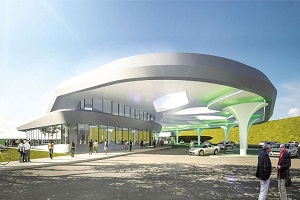Vision
More brain, less steel and copperThe energy world is on the threshold of a systemic change, the development of a new mobility model will see industrial sectors converge which are now distant from each other, with a preference for the electric carrier to the detriment of traditional fuels:

automotive
with new design criteria, the entry into the field of manufacturers other than traditional and the invasion of light vehicles, from single wheels to scooters to more sophisticated e-bikes;

distribution of energy products for transport
not only Oil & Gas but also electricity through rapidly evolving technologies, front-line storage systems;

electricity infrastructure
whose architecture, now dating back to the post-war period, is deficient compared to the general development needs of fast charging systems for motor vehicles;

digital communication and control technologies
that will allow highly innovative services, from intelligent geolocation to assisted and autonomous driving;

innovative architecture
with the creation of dedicated spaces and structures that allow the best use of the time necessary for minimum recharges with services designed mainly on the needs of people;

the smart city
that is the possibility that, through a “more brain, less steel and copper” approach, the intelligent interconnection between all available energy resources and their correct balance with demand is achieved, in order to concretely realize what is implied by the generic term “Sustainability”.
Electric mobility is emerging as an alternative to the current model based on the use of fossil fuels. Lithium batteries currently offer an energy density capable of supporting applications in the automotive sector very well, but the differences with the mobility model based on heat engines are profound and structural.
The electric vehicle is a large battery on wheels. Given its nature it can be productive not only on the move, carrying out a transport service, but also when stationary, by exchanging energy for network services in a “smart purchase” perspective. In this way, the exchange of energy also becomes a factor of remuneration.

Therefore, each EV user will not use the vehicle simply to move in a spatial dimension to which we are used to using conventional vehicles, but will interpret the connection time to the network according to their own interest, therefore no longer just for movement but with a view to economic optimization. and temporal efficiency.
The very nature of electric mobility will be driving and driven by widespread digitalization both for:
1. coordination and development of smart mobility plans (development areas that provide for the coexistence of factors between high influx and robustness of the electricity grid infrastructure)
2. the complex and variable forms of the electricity market in real time, with the consequent need to diversify (also through self-production) purchase prices and powers involved in a “smart purchase”
3. the need for optimal exploitation of the time required for an EV connection, not intended only as a passive action of “energy topping up” but interpreted from a D-R and VPP perspective
In this perspective, since the connection time of the EV vehicle to the network is a decisive factor both in a passive key (minimum recharging time) and in an active key (supply of services to the network through on-board batteries), we enter the concept of multidimensionality of electric mobility.
